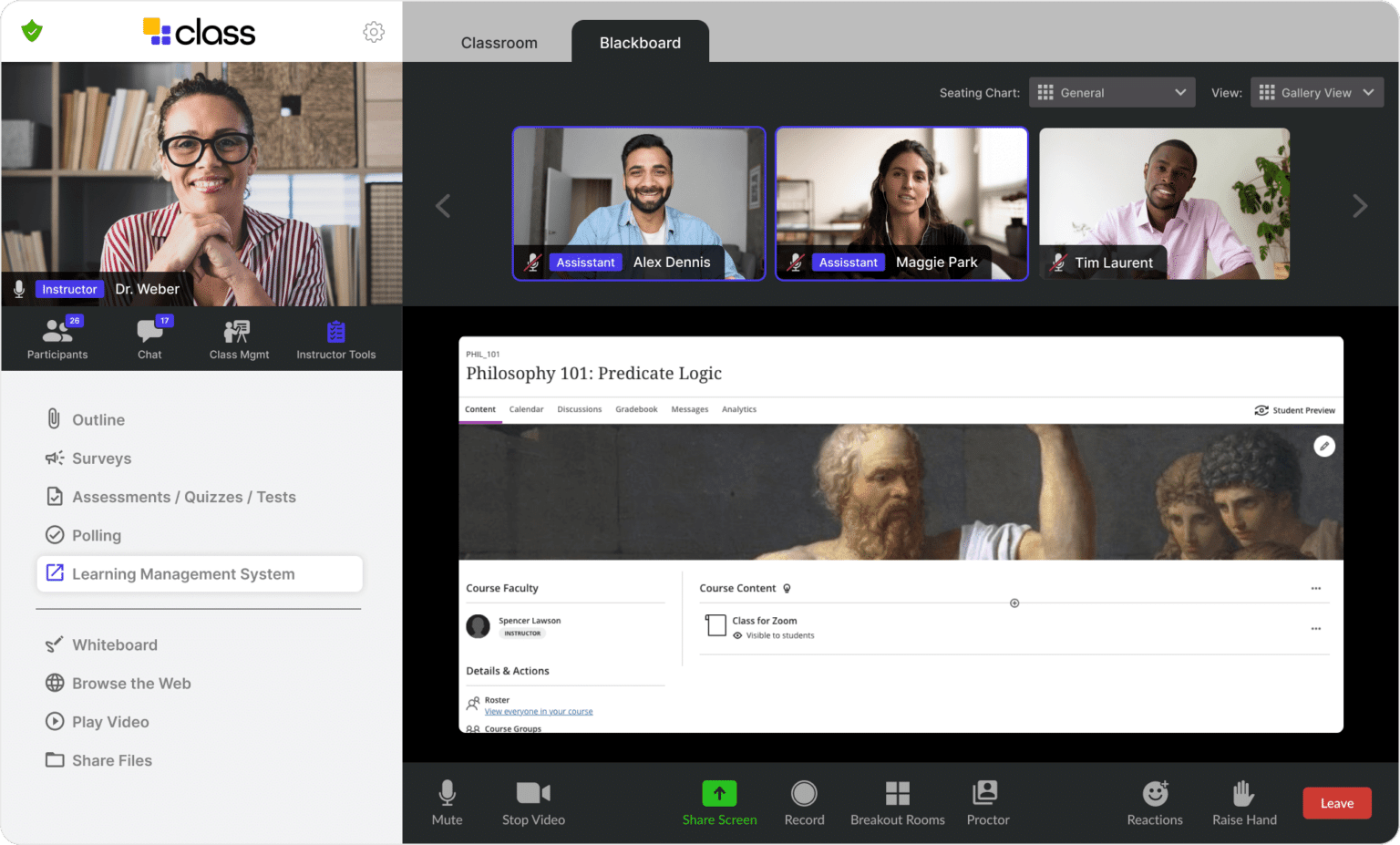
Jamie Turak is an Education Content Manager at Class. He's passionate about storytelling and helping to make education more accessible.

Jamie Turak is an Education Content Manager at Class. He's passionate about storytelling and helping to make education more accessible.


2021-22 school year
The next era of online learning is here for institutions like George Mason University (GMU).
According to the 2022 Students and Technology Report, the percentage of students in higher education that prefer mostly or entirely online courses increased more than threefold, from 9% in 2020 to 29% in 2022. And while learning online trends in institutional adoption and student preference, colleges and universities enter a new digital age.
But a greater opportunity to reach more students comes with new challenges. To be successful, institutions must deliver the same caliber of learning online that traditional in-person systems have offered. Online courses and programs must ensure the same academic success, social connections, and impactful experiences learners need.
George Mason University (GMU), located in Fairfax, Virginia, is at the forefront of this next era, partnering with Class to improve online learning offerings. Like other schools, the COVID-19 pandemic helped GMU rapidly launch virtual options for students at scale. But today, while administrators, support staff, faculty, and students have adapted to new online environments, simple adoption is not enough. GMU’s leadership team has a new focus: it’s not anymore about deployment but improvements.
GMU knows that improving online learning beyond typical video conferencing screens is necessary for the future. “There’s more breathing room, two years in,” says Kim Redelsheimer, Adjunct Faculty at GMU. “We see that online tools have evolved, and our approach has been to focus on the expertise the community has gathered. Leveraging that expertise is our next step forward.” By leveraging insights of its community—from students to instructors to designers and administrators—the university seeks to offer “online learning [that] is completely on par with an in-person learning experience that adds advantages that on-ground doesn’t have,” explains Redelsheimer.
Change management requires strategy. And the future of remote learning asks institutions like GMU to implement technological change thoughtfully. Integrating new technology—and campus usage at scale—can no longer be sufficient and quick. Instead, it must be exemplary, thoughtful, and designed to meet the needs of users and the institution.
GMU’s implementation of Class serves as a model for other institutions. The pilot program, designed by Jim McLean, Sr. Instructional Technologist and Adjunct Faculty at GMU, phases in the new technology over several semesters. As an administrator for Class with Blackboard and a GMU faculty member, McLean’s diverse perspectives guide a successful pilot integration. The two-semester timeline gives faculty and administrators time to work out bugs, develop training workflows, and get the support needed for launching campus-wide.
For the pilot, GMU selected a small group of faculty and instructional designers. This group used Class for one semester to learn and iterate, then launched it at a low level for students in the summer. Through these trials, GMU’s leadership learned first-hand how the experience was for students and instructors. And what they learned will guide their subsequent campus-wide launch.
Improving online learning beyond web conferencing screens requires the right technology. So, GMU found Class to revolutionize their online learning offerings. Among other things, GMU uses Class to give professors a greater ability to bring their skills, knowledge, and experience into a more personalized learning experience online.
As Kim says, “Class isn’t just a video conferencing tool; it’s a classroom tool.” Instructors can choose different sharing options to diversify and personalize their instructional delivery. These include 1-1 chats, monitored breakout rooms, whiteboard interactions, and integrated web browsers into their virtual classroom home screen. These features give students more opportunities to work collaboratively and all in one place. Class helps centralize interactions between students, instructors, tools, and media, which keeps learning online impactful and engaging.
McClean and Redelsheimer found that Class was an easy platform to learn, even with its features. Instructors and students can choose the tools they feel most comfortable with, then gradually introduce more over time.
Class offers a range of valuable tools for instructors to create a more structured and engaging learning experience online. The Class platform also facilitates student and classroom management at scale through live student session data, student sorting features, and instructor monitoring. These management tools help support both traditional and self-directed learning approaches for students.

Beyond the Class platform, GMU’s learning management system (LMS) integrates easily with Class, keeping all of their institution’s learning technology working seamlessly together. At GMU, the integration of Blackboard Learn and Class lets instructors and students work together with both platforms. This offers a cohesive experience for virtual and hybrid instruction that supports synchronous and asynchronous use cases for various online learning options.
Integrating Blackboard Learn with Class was quick and effortless at GMU. According to McClean, it took less than an hour to get the integration configured and deployed. The user feedback was positive, and administrators and instructors found the process easy and user-friendly.
At GMU, the next era of online learning builds from an increasingly apparent hypothesis: the future of learning is a blend of virtual, hybrid, and HyFlex models. This multi-modal approach to learning allows institutions to meet more diverse needs of today’s global students, who demand digital learning options. By embracing the next generation of learning technology, institutions like GMU ensure students and schools are equipped to succeed in the 21st century.
Has your institution entered its next era of online learning–one that seeks improvements in quality, connection, and student success?
To learn more about how you can empower virtual learning at your institution, visit us at class.com/higher-ed or schedule your demo today.

Jamie Turak is an Education Content Manager at Class. He's passionate about storytelling and helping to make education more accessible.

Jamie Turak is an Education Content Manager at Class. He's passionate about storytelling and helping to make education more accessible.
Get our insights, tips, and best practices delivered to your inbox

Sign up for a product demo today to learn how Class’s virtual classroom powers digital transformation at your organization.

Features
Products
Integrations